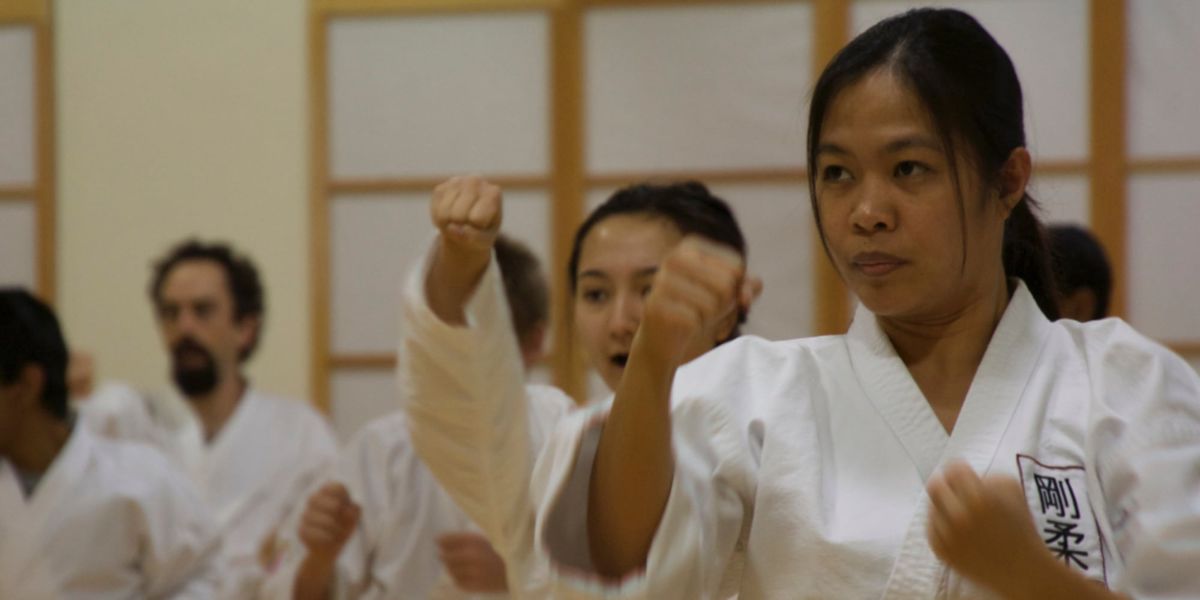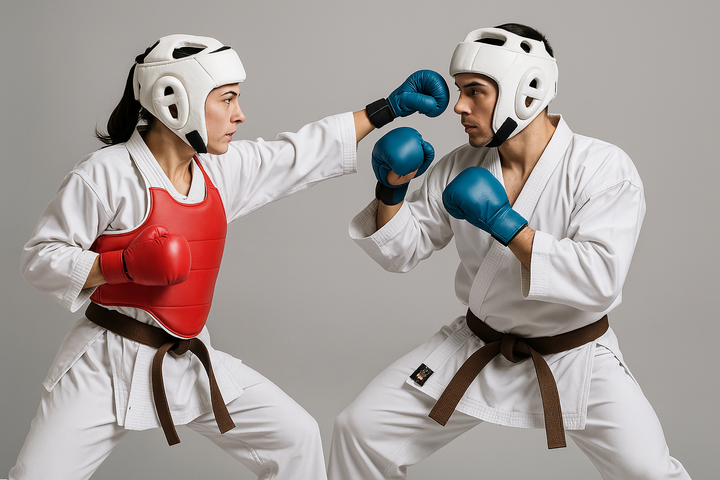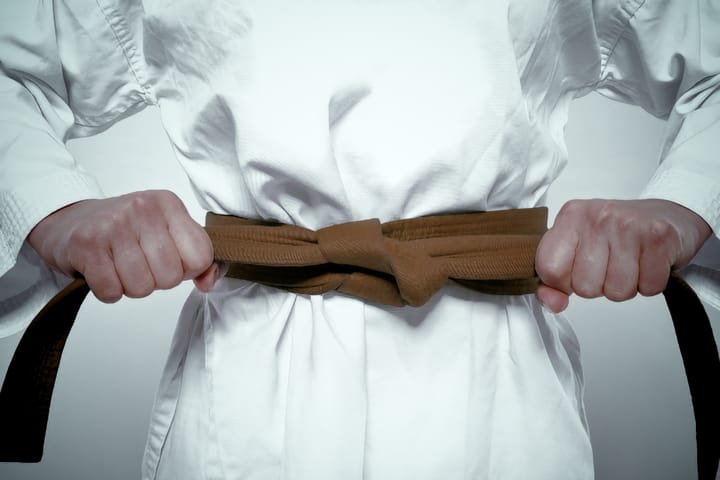The dojo floor is the great leveler that brings karateka from all walks of life onto a single stage.
Karateka (those who study and teach karatedō) never wear any kind of jewelry or other “personal” item on the dojo floor. That means no rings (including wedding rings), no decorative jewelry like earrings or necklaces, and no accessories like bands or watches.
Every wonder why?
There’s a really simple reason, and it speaks to the heart of what it is to both be a karateka and to train as one. We do so because, on the dojo floor, only one thing matters: rank and performance. And in fact, those two things are really the same: rank is a function of performance (at least it is at Goju Karate, and I assure you, it is at any other high-quality dojo anywhere in the world).
Rank Matters
Rank matters because the presumption is that you earned that rank. And you earned it through high-performance, including practice and training, acquiring and sharpening knowledge and skills, and developing strong personal development both physically and philosophically.
Whenever I walk out onto the floor and look at a 4th kyu green belt and a 1st kyu advanced brown belt, I have different expectations of them. I expect that advanced brown belt to be more mature and polished, and more knowledgeable, than the green belt. If he or she isn’t, then there’s something wrong.
On the dojo floor, no one cares if you’re a pauper or a rich man; no one cares if you’re sixty years of age or thirty years old. No one cares whether you’re a man or woman, and no one cares if you’re somehow physically-challenged or if you’re a different race or ethnic background than they are.
The only thing that matters is this: who are you, as a karateka? And how can we both train together to help each other become better, and to help others at our dojo become better?
Rank matters, but nothing else does.
Safety First
Yes, rank matters, but we must also consider safety. In this case, mostly this concerns the safety of the individual karateka, but sometimes also the safety of their training partners.
For oneself, it is unfortunately too easy to catch an earring or a necklace on a pad or a training partner’s fingers or hand. If you’ve ever seen an earring torn out of an earlobe, you know exactly what can happen in situations like this. Best to avoid such an injury by making sure you’re not wearing anything you shouldn’t be.
And one of our paramount concerns as karateka should be to keep our training partners and fellow students safe: imagine how horrified you’d be if you’d accidentally forgotten to remove that wonderful ring on your finger, and then scratched a red line across the arm or face of your partner while practicing blocking combinations.
So, yes rank matters, but so does safety.
Just a Gi and a Rank Belt?
Sometimes students ask if this is really true: do we only wear a gi and a rank belt, and that’s it?
In general, yes, but there are some things to consider that aren’t really exceptions, but are perhaps best viewed as refinements of this basic concept.
Here’s a few things to keep in mind:
If a piece of jewelry can’t be easily removed (for example, an earring that might cause actual injury to remove) then it must be covered by tape. Our Front Desk always has athletic tape at no cost to students and will happily assist in taking care of this.
An item such as a wrist wrap or ankle wrap, or a bandage around a finger or toe, is always permitted. These aren’t cosmetic, they are needed to keep karateka safe or help heal injuries.
An item that a karateka is required to wear because of a religious dictate is almost always permitted. However, always ask your instructor about this, and only do this if there is a truly defining religious necessity and you are able to explain this clearly. A favorite religious necklace doesn’t count here, this needs to be about religious identity and keeping faith with a deeply-held religious belief. Karatedo always respects the religious beliefs of others and supports their free expression.
Any items that aren’t visible (such as knee wraps, support garments, etc.) are always permitted. If its not visible, there is no prohibition against wearing it on the dojo floor. The question of visibility also extends to wearing a t-shirt underneath a gi. Most women karateka wear t-shirts under their gi; however, the t-shirt should always be a single plain color, and usually should be white, or failing that, black. Men generally can also do so at any time (usually this occurs more during the colder winter months, but some men do so at all times of the year), but again the t-shirt should be a plain single color, and generally white is preferred, with black being a secondary choice.
Remember Why We Train
Keep in mind why we are karateka: we train in karatedō in order to become better, to improve ourselves. On the dojo floor, that’s all we’re concerned about, and anything that distracts from that mission, or somehow doesn’t honor that mission, is undesirable.





